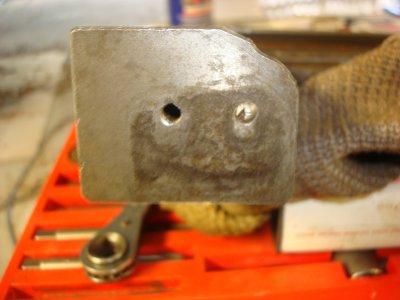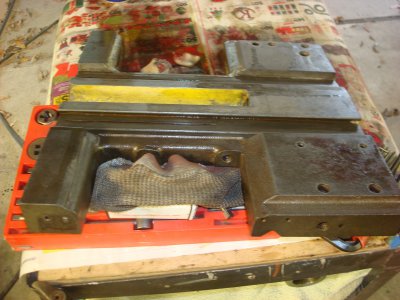For small screws, I drill a small diameter pilot hole and then enlarge it to the size required for a screw extractor. If the screw is stubborn (rusted in or cross threaded), I will drill out progressively larger holes until I hit the thread. With each drilling operation, I try to adjust for any visible runout. Many times, this will loosen the screw remnants enough to unscrew. If not, when I hit the tap drill size, I will run a tap in. Ideally, the tap will follow the old thread. I go carefully at this point because it is possible to jam the tap and snap it off. One thing worse than a broken screw is a broken tap.
The last one that I did was in an aluminum caliper mount for a badly corroded M5 screw. The remnants of the screw were pushed out by the tap and the original threads were virtually untouched.
 Morning guys,well I started on the saddle of my Colchester lathe.Its just about all cleaned up,oil channels flush,all bolt holes have had a tap ran down them except one.Yep it was broken off by the last owner so don't blame me,yetLOL.Anyway its for one of the felt wippers (which I do need to find) and guys I just have never had any good luck trying to remove a broken screw.Its a 10/24 which is just about broken off flush,just a little tip sticking up.I was wondering what your method of removing a small broken screw is?Maybe this will increase my chances of being successful,asking first.Yes I know the pics are big which I have tried to make them smaller and at the bottom of the post but I haven't been successful at that neither.
Morning guys,well I started on the saddle of my Colchester lathe.Its just about all cleaned up,oil channels flush,all bolt holes have had a tap ran down them except one.Yep it was broken off by the last owner so don't blame me,yetLOL.Anyway its for one of the felt wippers (which I do need to find) and guys I just have never had any good luck trying to remove a broken screw.Its a 10/24 which is just about broken off flush,just a little tip sticking up.I was wondering what your method of removing a small broken screw is?Maybe this will increase my chances of being successful,asking first.Yes I know the pics are big which I have tried to make them smaller and at the bottom of the post but I haven't been successful at that neither.

